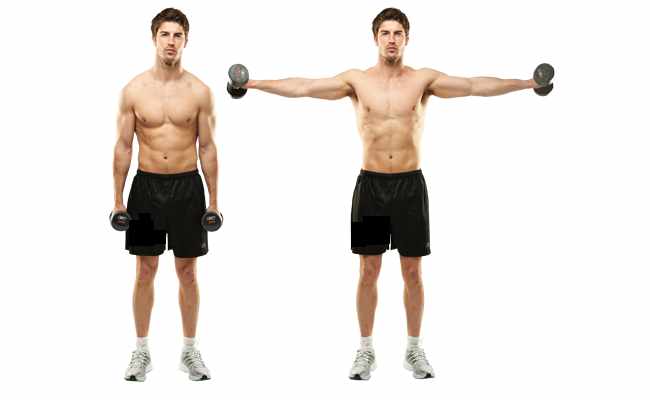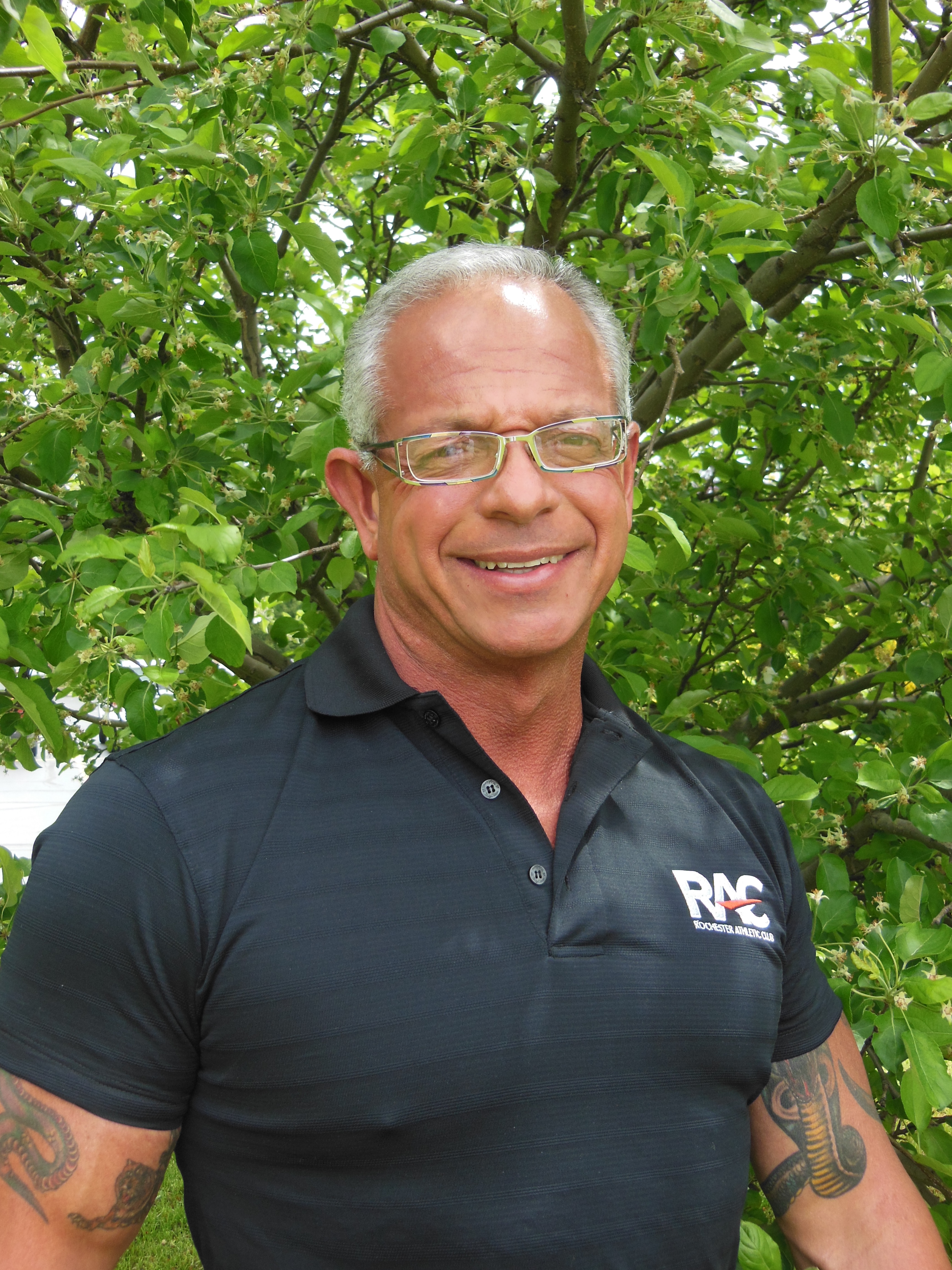Emphasis
The primary muscles stressed in this movement are the shoulder muscles (medial deltoid). The secondary muscle stressed is the trapezius.
Starting Position
Grab a dumbbell in each hand. Stand straight up and down with your feet shoulder width apart and your knees slightly bent. Place your hand at your sides with your palms facing your body. Keep your elbows slightly bent.
Movement
Keeping your elbows slightly bent, raise the dumbbells out to the side until your elbows are even with your shoulders. In this position your palms should now be facing the floor. Take two three seconds to lower the dumbbells down to the starting position.
Training Tips
- Focus on “leading” with your elbows as you raise the dumbbells to keep the stress on the medial deltoid.
- Keeping your body slightly leaning forward will also help keep the stress on the medial deltoid.
Options
- You can also perform this movement with your thumbs point up toward the ceiling for rehabilitation purposes or if you are trying to isolate different muscles in the shoulder.
- This movement can also be performed with cables.
Warning Tips
- Do not shrug your shoulders as you bring the dumbbells up to shoulder level. Failure to do so can result in serious injury to your shoulders, trapezius and neck.
- Do not excessively arch your back when performing this movement. Failure to do so can result in serious injury to your back.
- Do not lower the dumbbells any faster than two to three seconds. You must be in control at all times during this movement. The faster you perform this movement, the less control you will have which in turn will increase your risk of injury.
- Do not allow your hands to internally rotate (thumbs down at the top of the movement). Failure to do so can result in serious injury to your shoulders.
- Do not lock your elbows at any time during this movement. Failure to do so will take away from the effectiveness of the movement.
 Robert Bovee Certified Master PPT, RTS, ETS, FTS
Robert Bovee Certified Master PPT, RTS, ETS, FTS
As one of the most successful Professional Personal Trainers and Exercise/Fitness Therapists in the United States, Robert continues to remain at the forefront of the industry by providing his clients with a thorough education and the tools to implement that education. By improving his client’s physical health, strength, endurance, cardiovascular fitness and nutritional habits, he is able to motivate them to lead longer, happier and more productive lives. Find out more about Robert and his personal training career and services, here.
Guest authors offer experience and educational insights based on their specific area of expertise. These authors are contributing writers for the NFPT blog because they have valuable information to share with NFPT-CPTs and the fitness community at-large. If you are interested in contributing to the NFPT blog as a guest, please send us a note expressing your interest and tell us how you can contribute valuable insights to our readers. We look forward to hearing from you! Send to editor@nfpt.com

